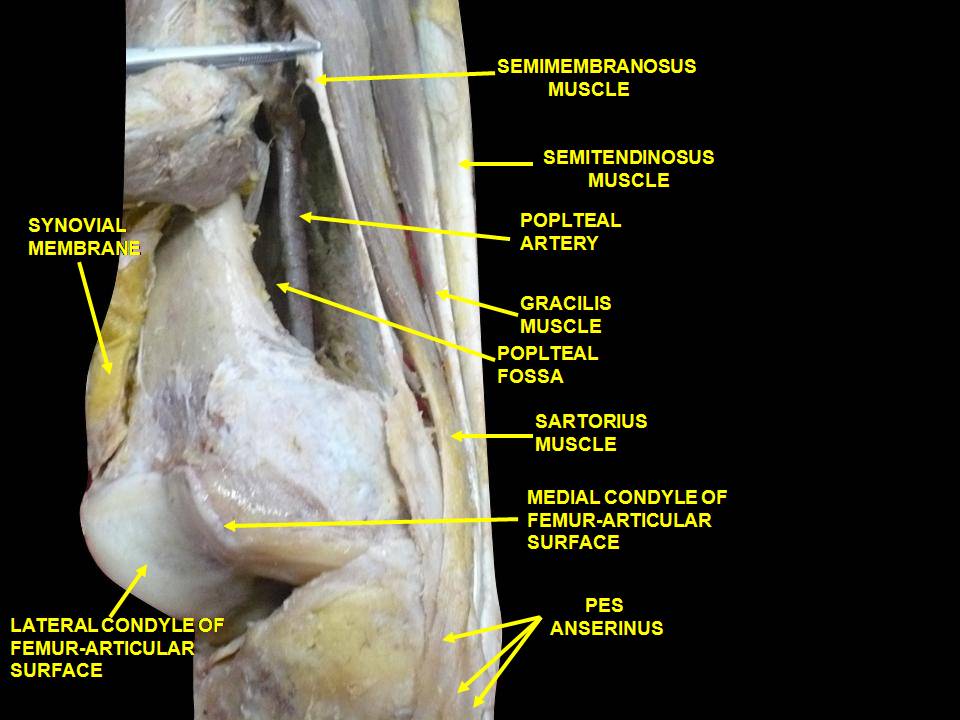Recalcitrant medial knee pain? Have you heard about the "Problematic Pes"...
/image source: https://commons.wikimedia.org/wiki/File:Slide2DADE.JPG
Recalcitrant knee pain just below the medial tibial plateau? Worse with sprints, hills and after running a while? It may be the pes anserine insertion(s).
Made up of the tibial insertions, from anterior to posterior, of the sartorius, gracilis and semitendinosis which lie superficial to the distal tibial insertion of the superficial medial collateral ligament. This structure is named from the way it looks, like a goose's foot (anserine pes), rather than its anatomical location. The pes anserine bursa lies below it and between the MCL and hamstring tendons and can be subject to compressive forces if compromised in some way, by injury or pathomechanics
The muscles of the pes anserine arise from three different compartments in the thigh. The sartorius originates from the anterior compartment, the gracilis from the medial compartment and the semitendinosus, the posterior compartment. Their varied origins, paths, and actions, as these muscles approach their insertion all add stability to the medial aspect of the knee.
During an ideal gait cycle, the sartorius fires from toe off through nearly terminal swing, the semitendinosus from mid swing through nearly loading response, with a brief firing at toe off and gracilis tonically throughout stance phase with bursts from terminal swing through initial contact and again from pre swing to initial swing.
image source: Tom Michaud, with permission
We remember that the abdominals should initiate thigh flexion with the iliopsoas, rectus femoris, tensor fascia lata and sartorius perpetuating the motion. Sometimes, when the abdominals are insufficient, we will substitute other thigh flexors, often the psoas and/or rectus femoris, but sometimes sartorius, especially in people with excessive midfoot pronation. Think about all of the medial rotation occurring at the knee during excessive midfoot pronation and when overpronation occurs, the extra compensatory external rotation that must occur to try and bring the knee back into the sagittal plane. The sartorius is positioned perfectly for this function, along with the semitendinosus which assists and external rotation and closed chain with the innocent pes anserine bursa directly beneath. This is complemented by the compressive forces of this gracilis firing because of the increased coronal plane motion occurring at the pelvis.
Call it pes anserinus bursitis or pes anserine tendinitis but they both add up to medial knee pain when the thigh needs help flexing.
Look to this troublesome trio the next time you have recalcitrant medial knee pain.
Gupta, Aman & Saraf, Abhinesh & Yadav, Chandrajeet. (2013). ISSN 2347-954X (Print) High-Resolution Ultrasonography in PesAnserinus Bursitis: Case Report and Literature Review. 1. 753-757.
https://www.anatomy-physiotherapy.com/knee/articles/systems/musculoskeletal/lower-extremity/knee/test-your-knowledge-the-pes-anserinus
Michaud T: in Foot Orthoses and Other Forms of Conservative Foot Care Williams & Wilkins, 1993 Pp. 50-55
Michaud T: in Human Locomotion: The Conservative Management of Gait-Related Disorders 2011

















